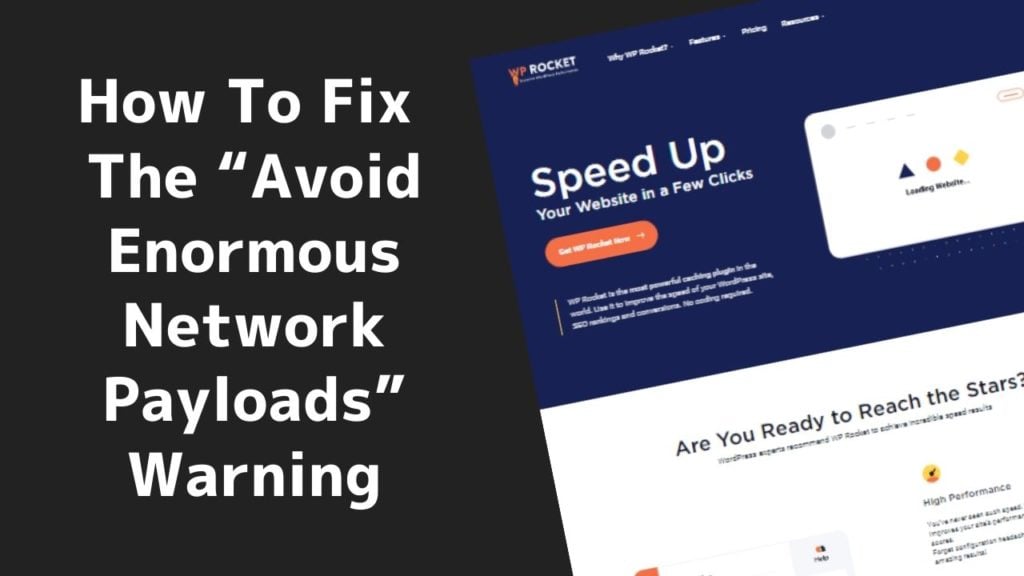WordPress is a popular platform. It powers many websites. But, sometimes it can be slow. One reason is large network payloads. This means your site loads a lot of data. This can make your site slow. But, you can fix this problem. Let’s learn how.

Credit: onlinemediamasters.com
What Are Network Payloads?
Network payloads are the data your site sends and receives. Every time someone visits your site, data is transferred. This data includes images, text, and scripts. If the payloads are too large, your site becomes slow. This is not good for users. It can also affect your search engine ranking.
Why Large Payloads Are Bad
Large payloads slow down your site. Users do not like slow sites. They may leave and not come back. Search engines like Google also do not like slow sites. They rank them lower. This means fewer people will find your site. You want to keep your payloads small.
Ways to Reduce Network Payloads
There are many ways to reduce network payloads. Here are some easy steps you can follow. These steps will help your site load faster. Your users will be happy.
1. Optimize Images
Images are often the largest part of a network payload. You can make images smaller without losing quality. Use tools like TinyPNG or ImageOptim. These tools compress images. They make them smaller. Smaller images load faster.
2. Use Lazy Loading
Lazy loading means images load only when needed. If an image is not on the screen, it does not load. This saves data. Use plugins like Lazy Load by WP Rocket. They are easy to install and use.
3. Minify Css And Javascript
CSS and JavaScript files can be large. Minifying them makes them smaller. This means removing extra spaces and comments. Use plugins like Autoptimize. They can help you minify these files. Smaller files load faster.
4. Limit Plugins
Plugins can add a lot of data to your site. Only use the plugins you need. Too many plugins can slow down your site. Check your plugins regularly. Remove any that you do not need.
5. Use A Content Delivery Network (cdn)
A CDN can help your site load faster. It stores copies of your site on servers around the world. When someone visits your site, the CDN delivers the data from the closest server. This makes your site load faster. Services like Cloudflare offer CDN options.
6. Enable Gzip Compression
Gzip compression makes your files smaller. This helps them load faster. Most servers support Gzip. You can enable it through your server settings. Or, use a plugin like WP Super Cache.
7. Use Lightweight Themes
Some themes are heavy. They have a lot of extra features. These features can slow down your site. Choose a lightweight theme. These themes are simple and fast. Examples include Astra and GeneratePress.

Credit: www.wpspeedfix.com
Tools to Measure Network Payloads
You can use tools to check your network payloads. These tools show you how much data your site loads. They also give tips to improve your site.
Google Pagespeed Insights
Google PageSpeed Insights is a free tool. It shows you how fast your site loads. It also gives you tips to make it faster. Just enter your site URL and click analyze.
Gtmetrix
GTmetrix is another free tool. It gives you a detailed report. You can see what is slowing down your site. It also gives you tips to improve your site.
Pingdom
Pingdom is a paid tool with a free trial. It shows you how fast your site loads. It also gives you tips to improve your site. You can see which files are the biggest.
Frequently Asked Questions
What Are Network Payloads In WordPress?
Network payloads are data transferred between the server and the user’s browser.
Why Are Large Network Payloads Bad For WordPress?
Large payloads slow down page loading, affecting user experience and SEO rankings.
How Can I Reduce Network Payload Size?
Optimize images, use lazy loading, and minify CSS and JavaScript files.
What Is Lazy Loading In WordPress?
Lazy loading delays loading images and videos until the user scrolls to them.
Conclusion
Large network payloads can slow down your WordPress site. This is bad for users and search engines. But, you can fix this. Optimize your images. Use lazy loading. Minify CSS and JavaScript. Limit plugins. Use a CDN. Enable Gzip compression. Choose a lightweight theme. Use tools like Google PageSpeed Insights, GTmetrix, and Pingdom to check your site. Follow these steps to reduce your network payloads. Your site will load faster. Your users will be happy.






